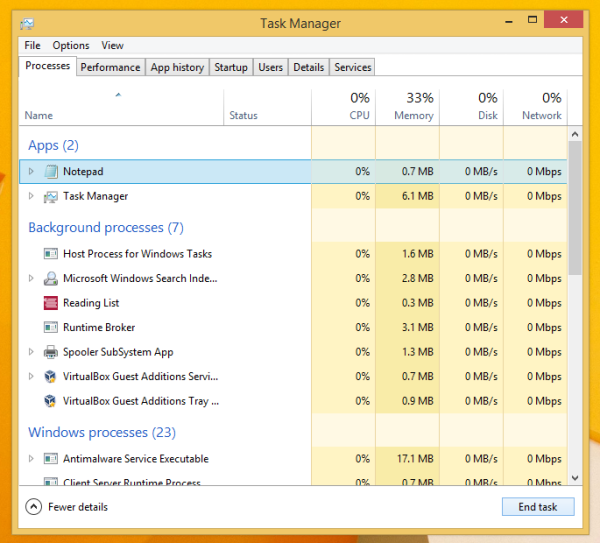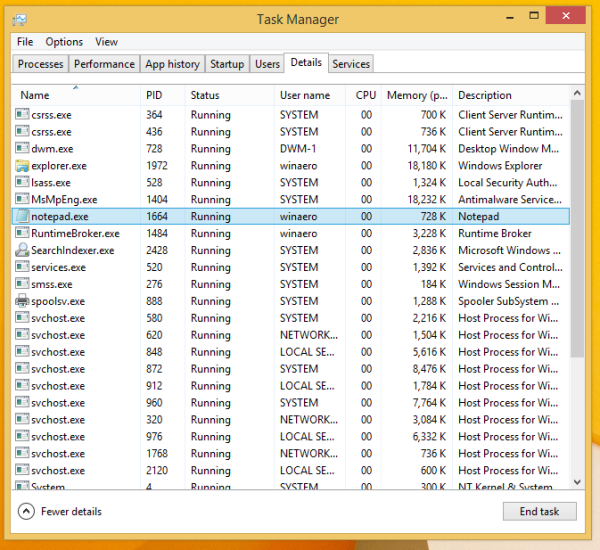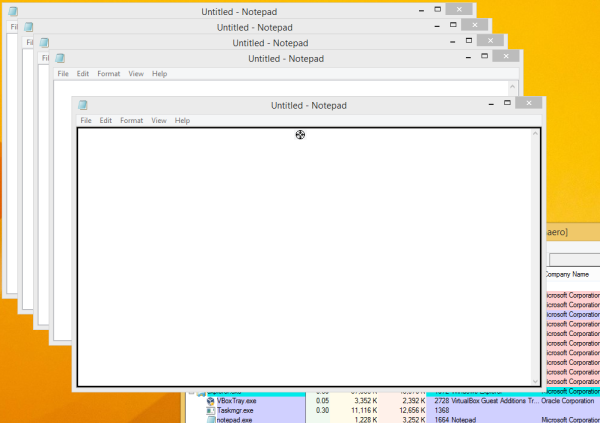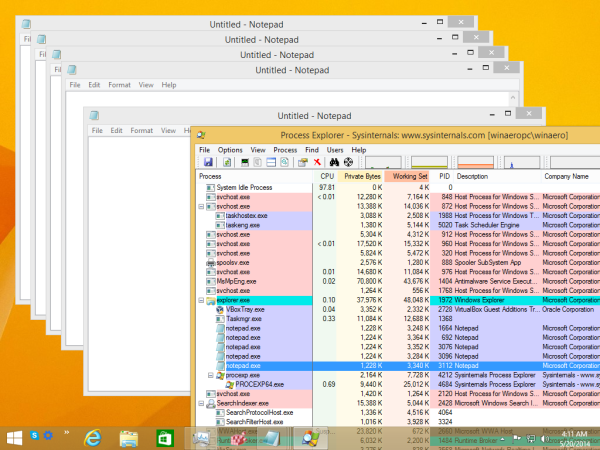In Windows 8, the Task Manager received an overhaul and saw the addition of several useful features. It can manage startup apps now and calculate their impact on startup performance. You can also see app history and copy process details quickly with it. In the "More details" mode, Task Manager has two tabs, Processes and Details, to control running apps. Today, I would like to share with you a very simple trick to kill a running app quickly.
Advertisеment
To kill an app, you have to select it on the Processes tab. After that, you need to click the End task button. There is also a keyboard shortcut for this. Select the app and press DEL on the keyboard. The selected application will be closed.
End Task from the Processes tab works usually if the app is still responsive. However if the app has stopped responding, crashed or frozen, then End task may not exit it instantaneously. Windows will try to create a dump first so you can analyze what caused the app to crash or hang. It will end the task after that. To terminate a hung app faster, use the End task button on the Details tab.
This used to be called End process in the classic Task Manager, and it terminate the process without creating a dump. If you are not sure of which process to select on the Details tab, then from the Processes tab, right click the hung app and click "Go to details". This will take you to the Details tab and automatically select the process of the hung app.
Here also, you can also use the DEL key on the keyboard to terminate the process. Another difference between End task on the Processes tab and on the Details tab in the Windows 8 Task Manager is that the Processes tab shows no confirmation and straightaway sends the command to close the app. The End task button on the Details tab shows a confirmation before forcibly killing the process.
Bonus Tip: How to find the required instance of the app from multiple windows of the same app
If you have several instances of the same app running, it might be hard to determine exactly which process you are working with. It is easy to know this when app windows have different captions, but if the window captions are the same for multiple instances of the same app, you can do the following to determine the required instance:
- On the Processes tab of the Task Manager double click the row of the app which has multiple instances running. The row will be expanded, and you will see a list of windows for the selected app.
- Right click on any of those windows (the bottom row in the expanded row) and select "Switch to" from its context menu. The corresponding app window will be activated. Using this method, you can determine which window you will be terminating and be sure that you don't terminate the wrong window.
- When you switch to the correct window which you want to terminate, return to the Task Manager, and just press DEL for the selected instance.
SysInternals Process Explorer is more powerful if you are trying to find the required instance of an app. It has a special "crosshair" icon on its toolbar to find a window's process.
You can simply drag the crosshair icon over a window and that window's process will be selected in Process Explorer automatically.
Support us
Winaero greatly relies on your support. You can help the site keep bringing you interesting and useful content and software by using these options:
